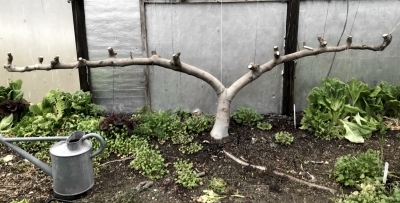GOURMET FERTILIZER
Vegetarian Plants
The other day in the hardware store I overheard someone ask the clerk for some rose food. My eyebrows went up as I thought to m’self, “Are they kidding, thinking that roses need their own special food? Next, I’ll hear about plants that prefer vegetarian or kosher food, perhaps fish emulsion on Fridays?”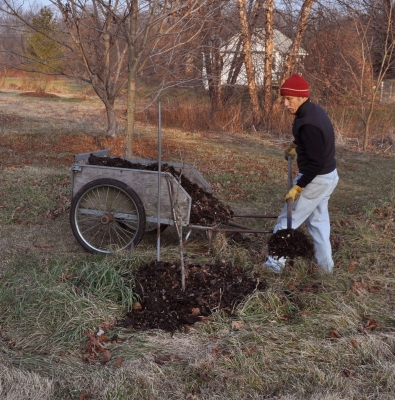
All this food science when it comes to plants may boost fertilizer sales, but it hardly bothers plants either way. Plants take up the bulk of their nutrients as ions (charged atoms or groups of atoms) that are dissolved in water in the soil. Rock particles, as well as humus and organic fertilizers, decompose to release nutrient ions slowly into the soil solution. Chemical fertilizers are already in ionic form, so when you sprinkle a handful on the soil, they dissolve as soon as they contact water.
A Well-Rounded, Wholesome Diet
What’s so special about rose food for roses? Nothing. All plants need healthy doses of nitrogen, phosphorus, and potassium, and lesser amounts of other nutrient elements. But unless a soil is an infertile sand where neither crop rotation nor some weed growth is allowed to balance soil nutrients, specific foods don’t usually have to be tailored for specific plants.
My garden grows pretty well, and I feed all my plants the same diet: An annually replenished mulch of wood chips, leaves, or compost, and, if extra nitrogen is needed, an annual sprinkling of soybean meal. Theoretically and in practice, an inch depth of compost alone provides sufficient nourishment for the plants. 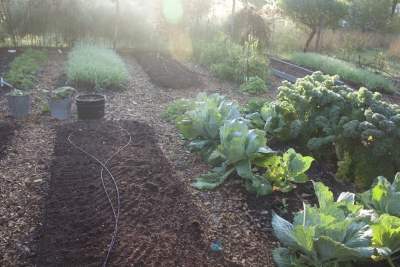 That inch depth of compost is the only thing my vegetable beds get each year, and it nourishes closely planted cabbages, tomatoes, lettuces, and other plants from the first breath of spring until cold weather barrels in to shut down production.
That inch depth of compost is the only thing my vegetable beds get each year, and it nourishes closely planted cabbages, tomatoes, lettuces, and other plants from the first breath of spring until cold weather barrels in to shut down production.
Garden plants that are pressed into sustained production (nonstop flowering of those rose bushes, for example) or vegetables best plumped up with extra-succulence, like some leafy vegetables, might need an extra push with additional nitrogen. Or not.
Soybean meal, available in garden centers as well as anywhere selling animal feeds, is insurance in the form of a high nitrogen, organic fertilizer. Cottonseed meal, hoof and horn meal, alfalfa meal, or blood meal would serve as well. Soil microorganisms decompose the proteins in any of these fertilizers in a series of steps to produce amino acids, then ammonium ions, then nitrate ions. The latter two ions are the forms of nitrogen most utilized by plants.
I grew Brussels sprouts unsuccessfully for many years, with sprouts hardly bigger than marbles lining up along the spindly stalks. So last year, I sprinkled some soybean meal (2 pounds per hundred square feet) on the ground before laying down the compost. Success! The plants grew into sturdy, five-foot-high stalks along which were lined up almost golfball-sized sprouts.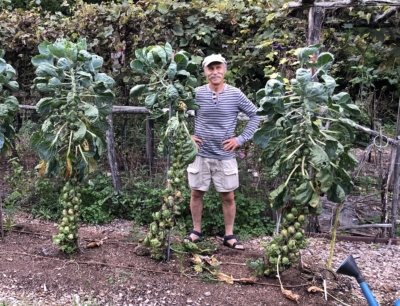
Flowers and mature trees and bushes get nothing more than arborists’ wood chips, leaves, hay, straw, or wood shavings here. Even these low nitrogen mulches eventually release nitrogen as their lower layers break down in the soil.
But Still . . .
You might point out that, still, there are some plants that need a specialty plant food: “acid plant food” for azaleas and rhododendrons, for example. You’ve got a point; these plants do have special needs. But my universal pabulum of mulch and soybean meal also suffices for them.
The special requirement of these plants is an acid soil. If a soil is not naturally acidic, the soil doesn’t need an “acid plant food,” it needs to be made acidic. The way to make a soil acidic is with sulfur, a naturally mined mineral. The amount needed depends on the existing soil acidity (determined with a quick soil test), the desired soil acidity (a pH of about 5 for acid-loving plants), and whether the soil is sandy or clayey. A sandy soil needs about 3⁄4# per 100 sq. ft. for each pH unit change; clay soils need about two-and-a-half times that amount. The sulfur to use is “pelletized” because it’s less dusty to work with. And, obviously, any compost for these plants should have had no added limestone.
What about the special nitrogen requirement of these plants? Commercial “acid plant food” supplies acid-loving plants with their preferred form of nitrogen, which is ammonium ion. Let’s see what happens to my soybean meal in an acid soil. A few paragraphs earlier, I wrote that though an orchestrated series of steps, various soil microorganisms gobble up proteins in soybean meal or other organic fertilizers, breaking them down to amino acids, ammonium ions, and then nitrate ions. In acidic soils, microorganisms that do that last job are absent. Breakdown stops at ammonium ion — just what those plants like best.
Plants don’t need haut cuisine, just plain, wholesome food. (More details about this in Weedless Gardening and The Ever Curious Gardener.)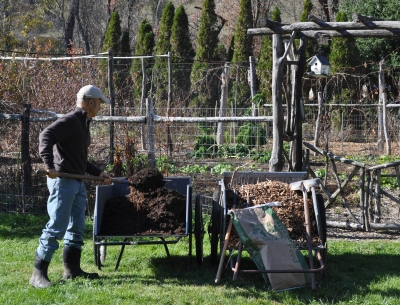
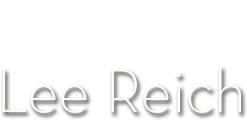
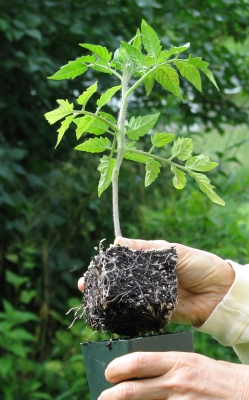

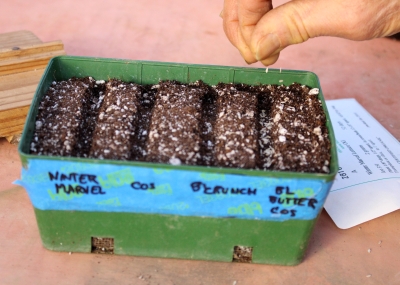
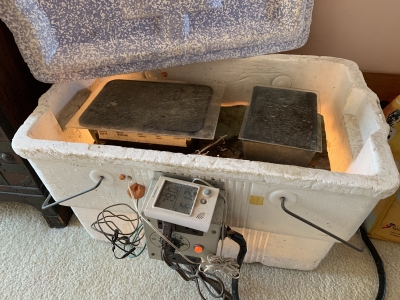
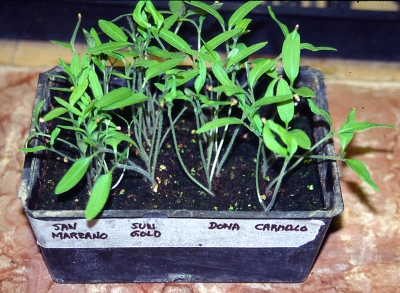



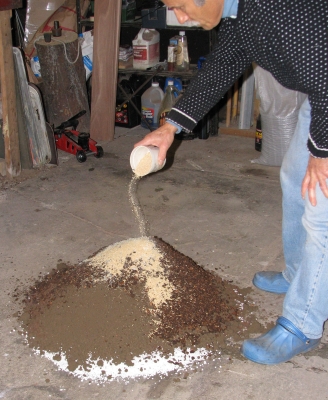 Then I pile up on the floor two gallons each of garden soil, peat moss, perlite, and compost. On top of the mound I sprinkle a cup of lime (except if I’ve sprinkled limestone on the compost piles as I build them), a half cup soybean, perhaps some kelp flakes.
Then I pile up on the floor two gallons each of garden soil, peat moss, perlite, and compost. On top of the mound I sprinkle a cup of lime (except if I’ve sprinkled limestone on the compost piles as I build them), a half cup soybean, perhaps some kelp flakes.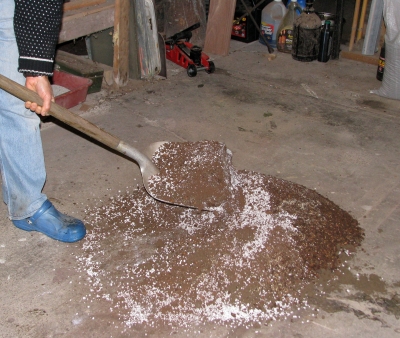 I moisten it slightly if it seems dry. When all mixed, the potting soil gets rubbed through a 1/2″ sieve, 1/4” if it’s going to be home for seedlings.
I moisten it slightly if it seems dry. When all mixed, the potting soil gets rubbed through a 1/2″ sieve, 1/4” if it’s going to be home for seedlings.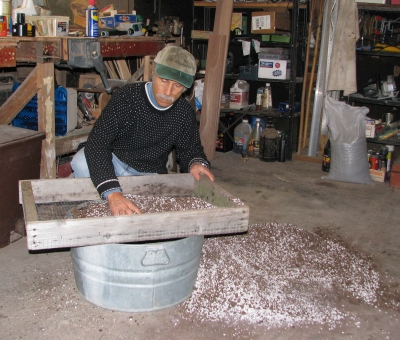
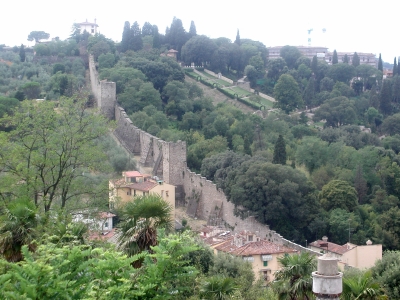
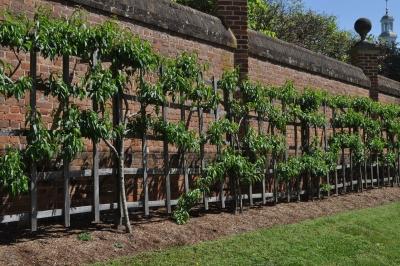
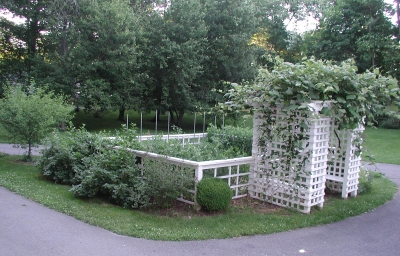


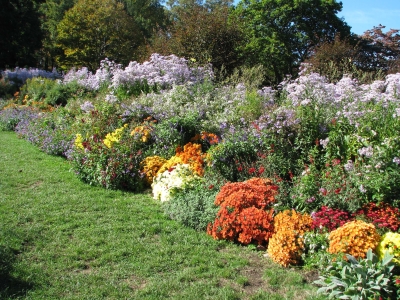

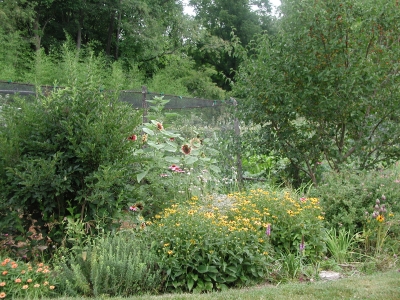


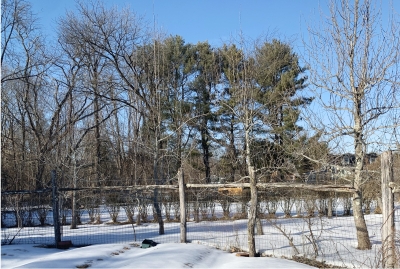 To the south my meadow ends at a sweep of another neighbor’s field, the more frequently mown grass of which undulate like waves in summer sunshine in contrast to the more upright asters, fleabanes, goldenrods, and monardas that stand upright among the grasses in my meadow.
To the south my meadow ends at a sweep of another neighbor’s field, the more frequently mown grass of which undulate like waves in summer sunshine in contrast to the more upright asters, fleabanes, goldenrods, and monardas that stand upright among the grasses in my meadow.
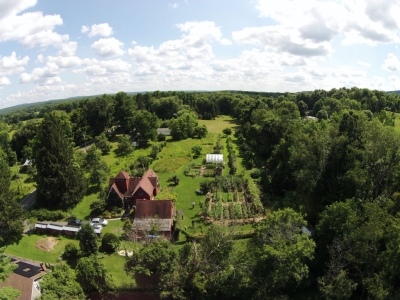


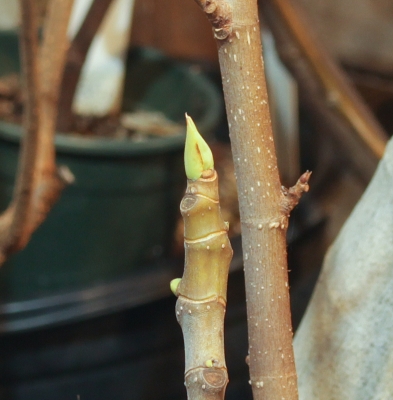

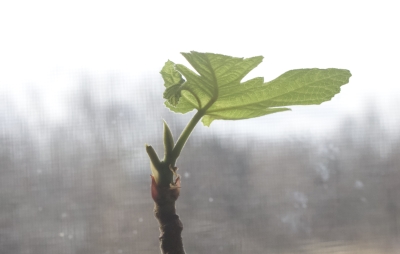 Besides having its thirst quenched just enough to prevent wilting, it sits in front of a large, unobstructed window facing due south in a room whose temperatures range from the 50s and 60s. (That’s why I’m writing while sitting here in a down jacket!)
Besides having its thirst quenched just enough to prevent wilting, it sits in front of a large, unobstructed window facing due south in a room whose temperatures range from the 50s and 60s. (That’s why I’m writing while sitting here in a down jacket!) The larger the plant, the more roots can be removed. I go around the edge of the root ball with a kitchen knife slicing an inch or two off around the edge of the root ball. That should tell Ms. Fig to chillax!
The larger the plant, the more roots can be removed. I go around the edge of the root ball with a kitchen knife slicing an inch or two off around the edge of the root ball. That should tell Ms. Fig to chillax!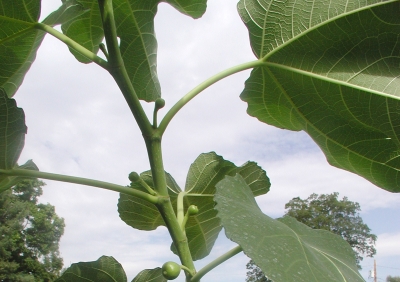
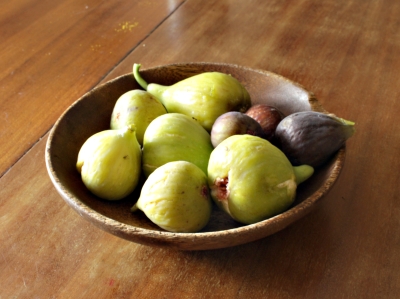


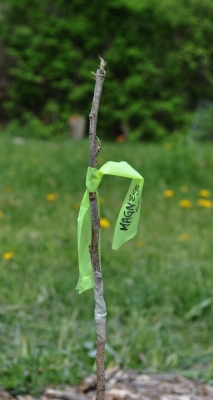

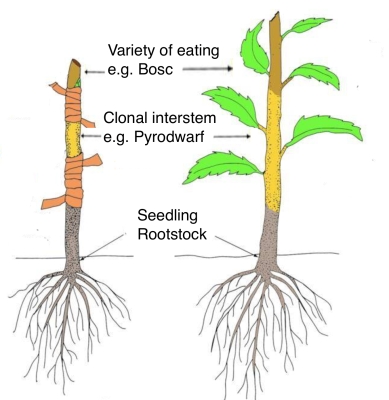
 So I sowed them in a 4×6 inch seed flat filled with potting soil, then moved the flat in front of a sun-drenched, living room window. Once the lettuce seeds sprouted, which was in a few days, I moved them to the greenhouse. Warmer temperatures are needed to sprout a seed than to grow a plant.
So I sowed them in a 4×6 inch seed flat filled with potting soil, then moved the flat in front of a sun-drenched, living room window. Once the lettuce seeds sprouted, which was in a few days, I moved them to the greenhouse. Warmer temperatures are needed to sprout a seed than to grow a plant.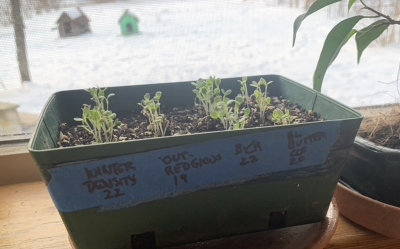
 I use this same method to keep up a steady supply of lettuce and other seedlings all through summer, the plants typically needing about a month in the
I use this same method to keep up a steady supply of lettuce and other seedlings all through summer, the plants typically needing about a month in the 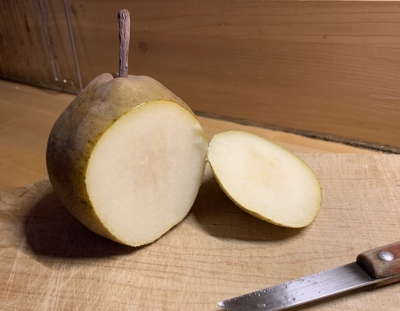
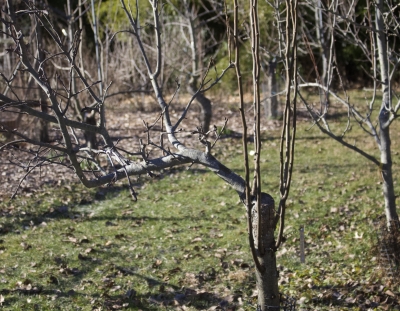


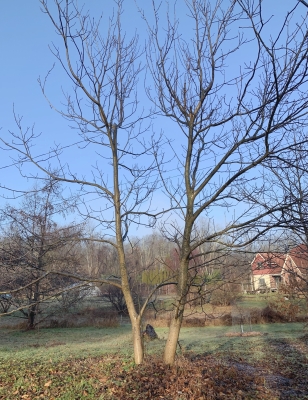
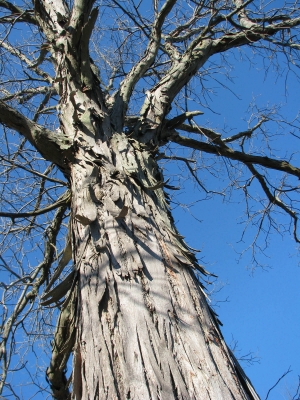 Shellbark hickory’s native range doesn’t extend as far east and south as shagbark’s. It’s found mostly along the Ohio and Mississippi Rivers, and bordering regions; nowhere, though, is it common. Also, the bark is less shaggy. The clincher is that shellbark nuts are much larger, around two inches long, and with thinner shells, so you get more bang for your buck with each nut you crack.
Shellbark hickory’s native range doesn’t extend as far east and south as shagbark’s. It’s found mostly along the Ohio and Mississippi Rivers, and bordering regions; nowhere, though, is it common. Also, the bark is less shaggy. The clincher is that shellbark nuts are much larger, around two inches long, and with thinner shells, so you get more bang for your buck with each nut you crack.
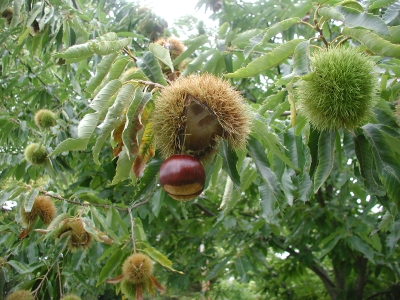 They’re often billed as the “bread tree” because in contrast to other nuts, which are high in fats and protein, chestnuts are high in starch. Obviously, you’re not going to be eating home-grown chestnut stuffing this year, or next, or the next; it takes awhile for a chestnut tree to start bearing. Not that long though. I’ve had plants grown from seed begin to bear within six years, and a grafted tree from a nursery should bear even sooner than that.
They’re often billed as the “bread tree” because in contrast to other nuts, which are high in fats and protein, chestnuts are high in starch. Obviously, you’re not going to be eating home-grown chestnut stuffing this year, or next, or the next; it takes awhile for a chestnut tree to start bearing. Not that long though. I’ve had plants grown from seed begin to bear within six years, and a grafted tree from a nursery should bear even sooner than that.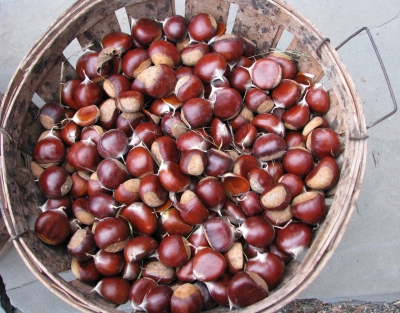
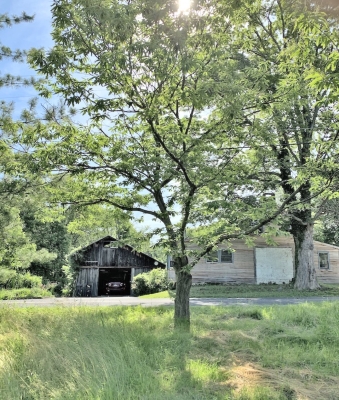
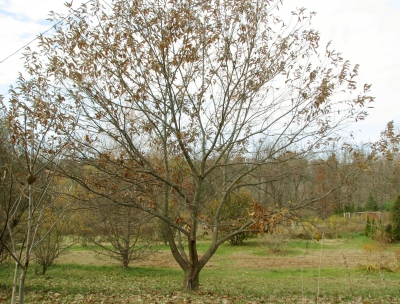
 Native Americans harvested and ate nu nu, and this was one of the foods crucial in helping the Pilgrims survive their first winters in Massachusetts.
Native Americans harvested and ate nu nu, and this was one of the foods crucial in helping the Pilgrims survive their first winters in Massachusetts.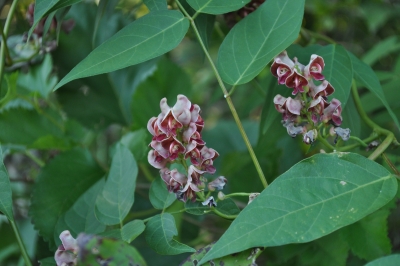





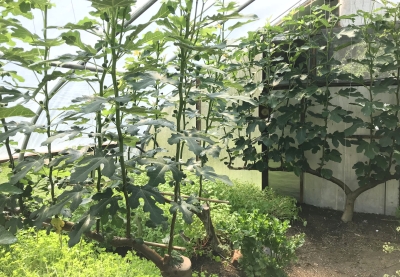
 Fruits are borne on shoots that grow vertically from these arms. Tomorrow I’ll lop all those vertical shoots back to the arms. Next year, new shoots will bear fruits and be cut back next fall, and the year after that, new shoots . . . and so on.
Fruits are borne on shoots that grow vertically from these arms. Tomorrow I’ll lop all those vertical shoots back to the arms. Next year, new shoots will bear fruits and be cut back next fall, and the year after that, new shoots . . . and so on.